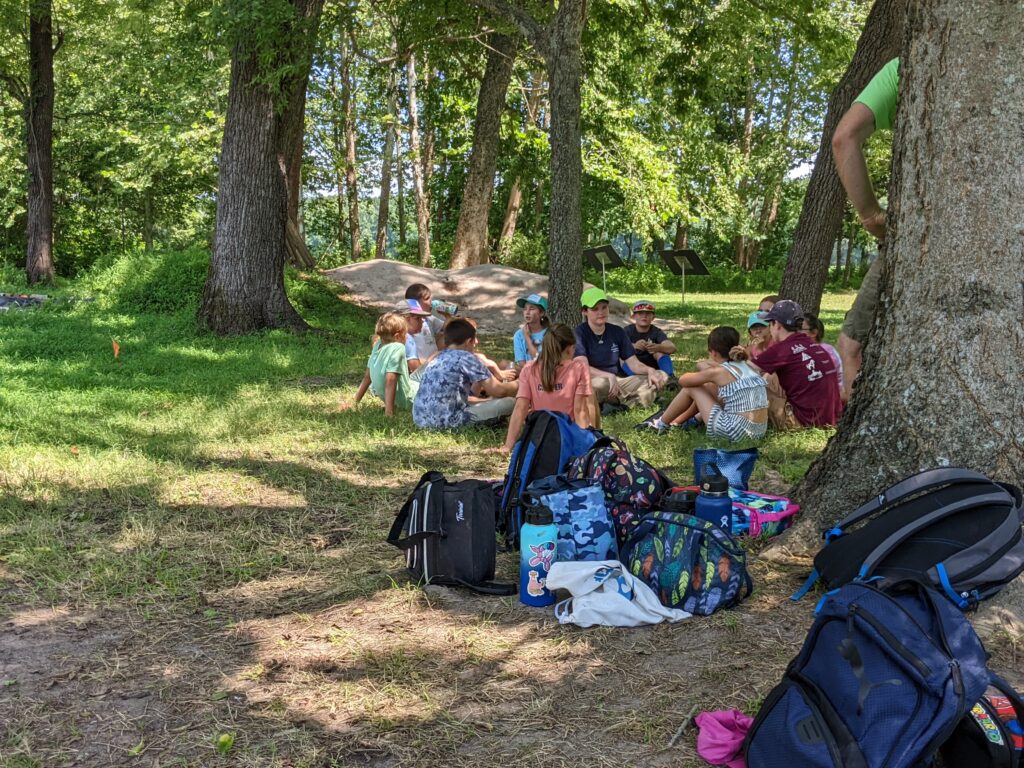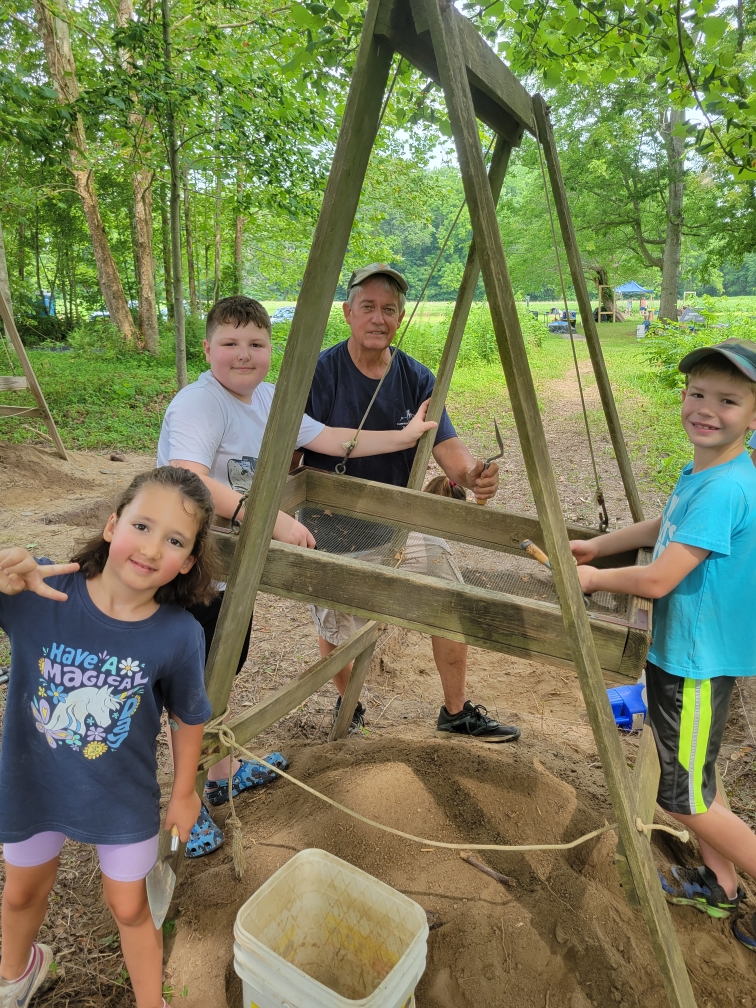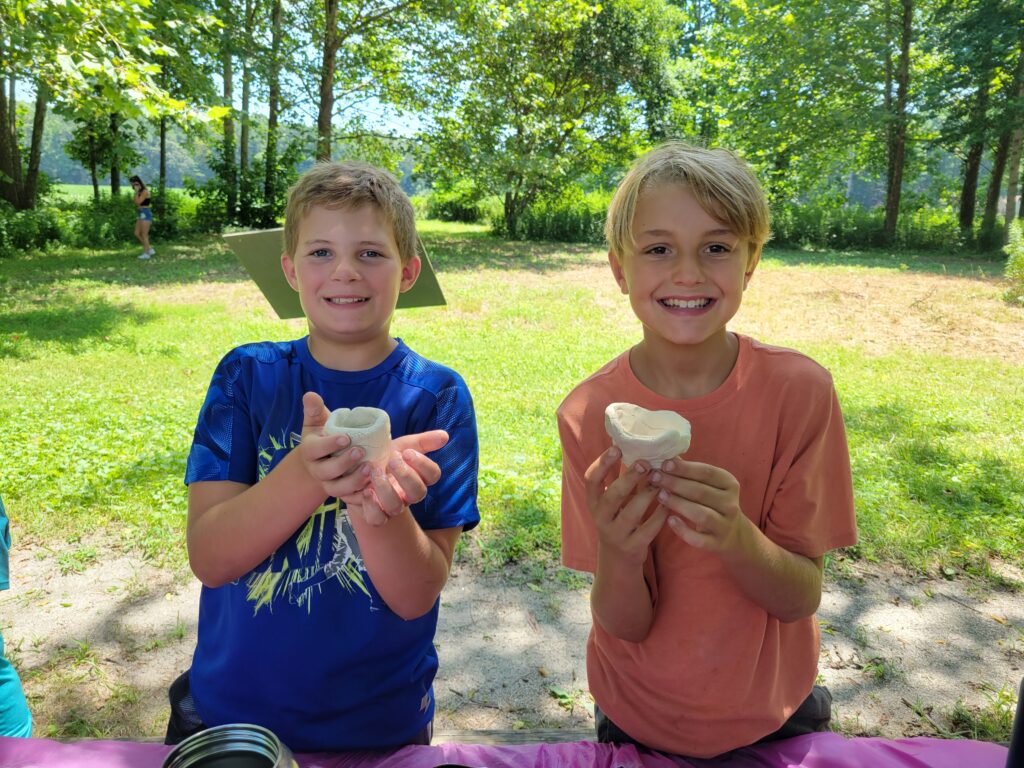Blog written by Rachel Boyd, Public Outreach Coordinator
The summer is over, and school is back in session. Hopefully our summer camp kids will talk about their time at Fairfield Plantation, learning what it was like to be an archaeologist… or how many tunnels they dug in the backfill. The beginning of fall is a good time to reflect on our first year of archaeology summer camps at Fairfield, and my first two months with the Foundation. After all, it was starting a summer camp and educating children about archaeology that piqued my interest in this job when I applied earlier this year.
Throughout June and July, the summer camps brought a lot of activity to the Fairfield Archaeology Park. Ashley McCuistion, who originated the Public Outreach Coordinator position, laid the groundwork for this year’s summer camps, leaving us an organized folder filled with educational materials and guidelines that greatly assisted in preparations for the camps. Anna Rhodes, Fairfield’s Senior Staff Archaeologist, already had the first round of emails and contact with campers and parents completed. My main task was to create the hourly schedule, buy the snacks, and polish my rusty Total Station skills to prepare the test units for campers to excavate.
The first week of camp (June 27 – July 1) consisted of 18 children ages 5-8. As you might expect, the first group was full of energy and we quickly realized that our hourly schedule needed some adjustments! The campers learned about the basics of archaeology (and a good bit about onions and centipedes). They were immediately experts at finding tiny pieces of brick within the light brown sandy soil at Fairfield. They began to understand that archaeology isn’t about finding the biggest pieces, but finding the broken remains that we mend through interpretation. And the camp counselor in me remembered that you need fun breaks to get through a long hot day, which for the kids included Red Rover, tag, and hydration.

During the second week (July 11–15), the 16 campers were the most dedicated of any of the three sessions. They had the biggest age range, from 6-12, in order to keep siblings together. This second time around, we separated the campers into excavation groups on two different portions of the site, and we included even more activity stations with the campers rotating every 15 minutes; more stations led to smaller groups, less crowding, and more hands-on fun.
The final week of camp (July 25-29) consisted of our oldest group of students (9-11 year olds), and this group exhibited a combination of the second week’s curiosity and the first week’s energy. These campers asked more questions, from the type of artifacts they were finding to what it takes to be an archaeologist. They were our smallest group of campers but were still able to put in some hard work and help us finish a couple of test units.
Overall, the camps were a great success! They accomplished the goal of educating children about archaeology. The hands-on involvement encourages learning during the summer; it’s a break from the traditional classroom or remaining indoors. As we look towards next summer, we’re thinking about adding more sessions earlier in the summer (cooler weather) and, by the campers’ requests, more water balloons for the final Friday each week. We are grateful for all of the children and parents who took a chance on our first year, and I’m grateful for the opportunity to lead the camp as my first big assignment at Fairfield. I hope to be part of many more summer archaeology camps. Stay tuned for news about kids camps in 2023!





